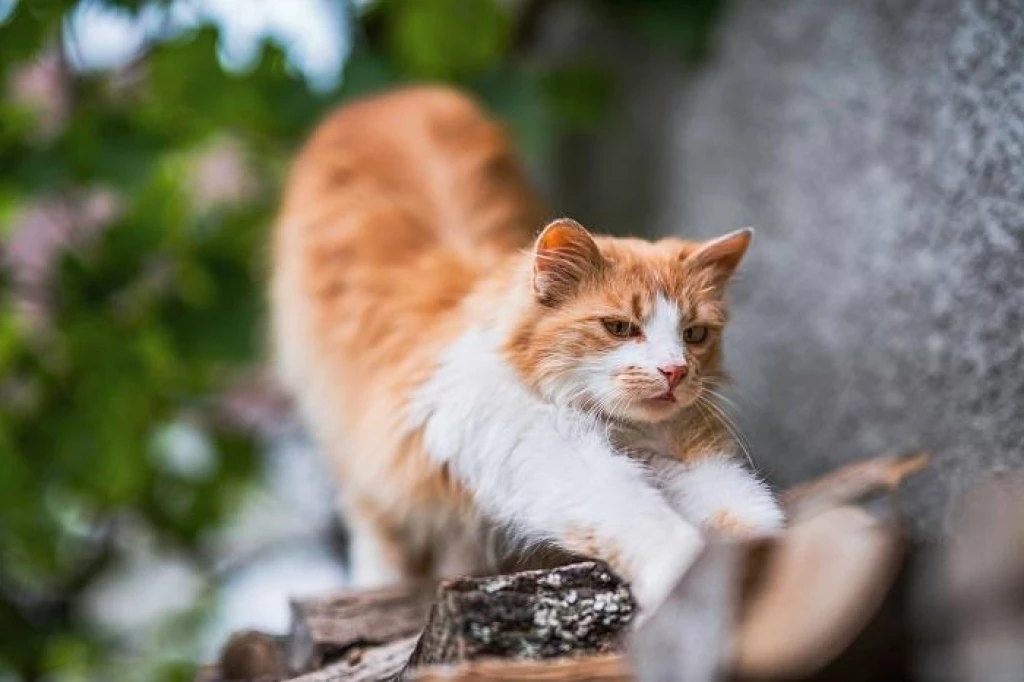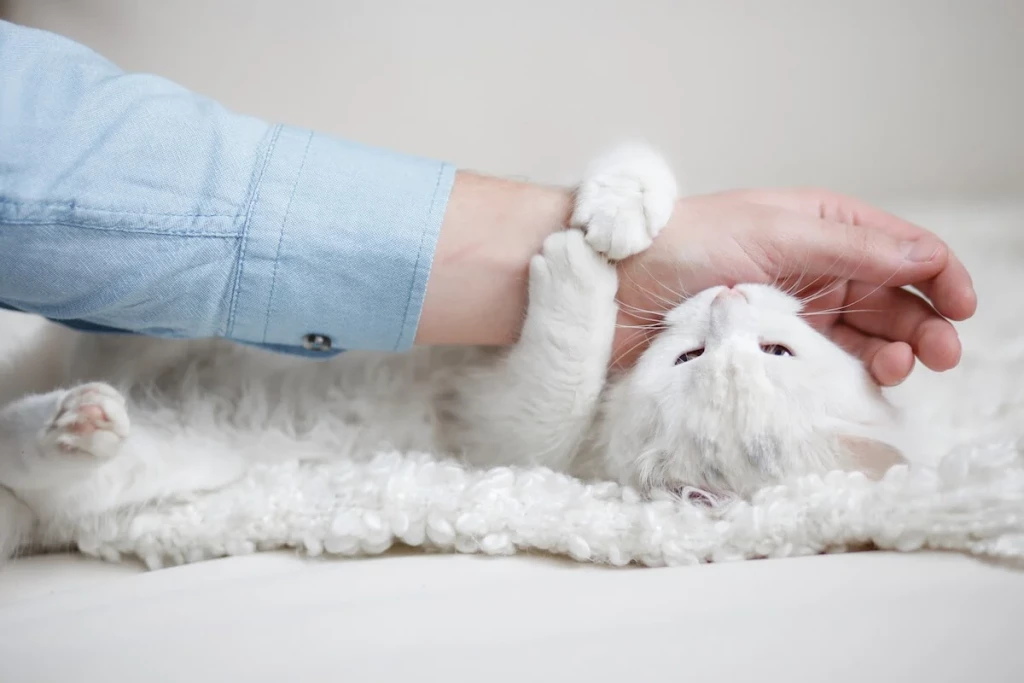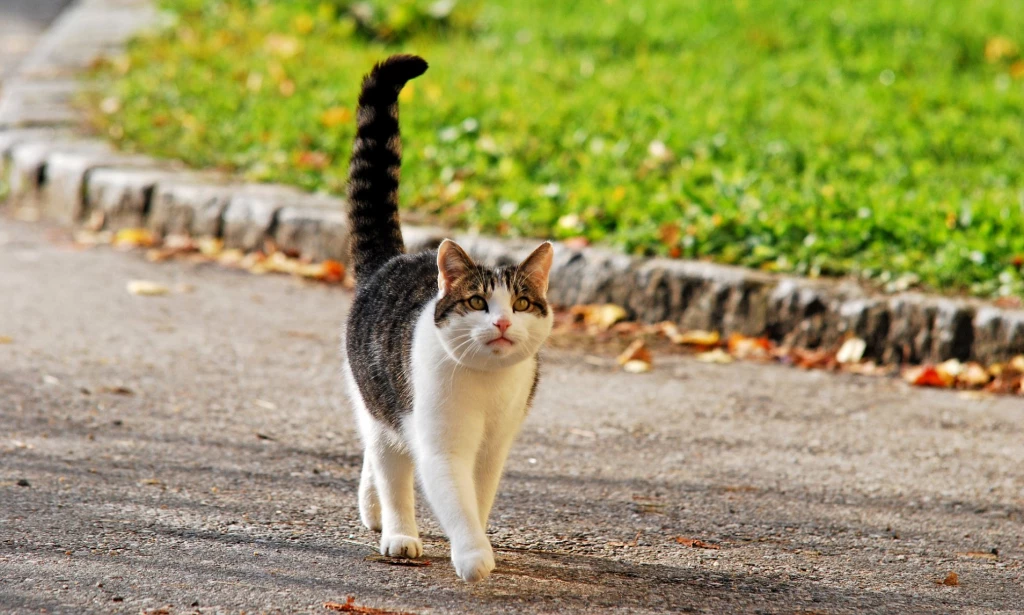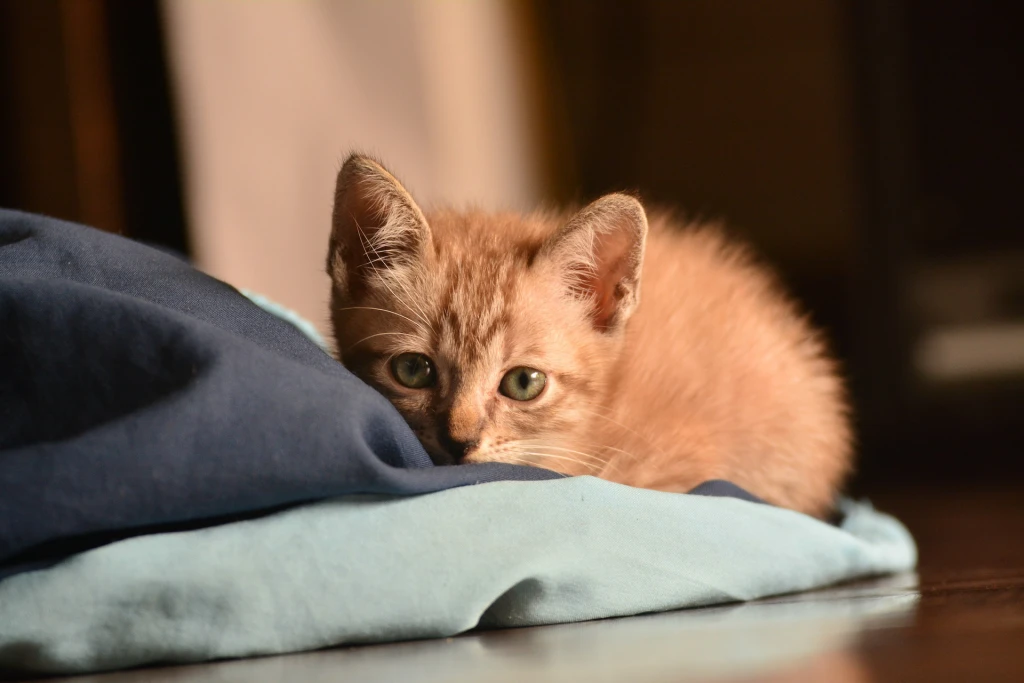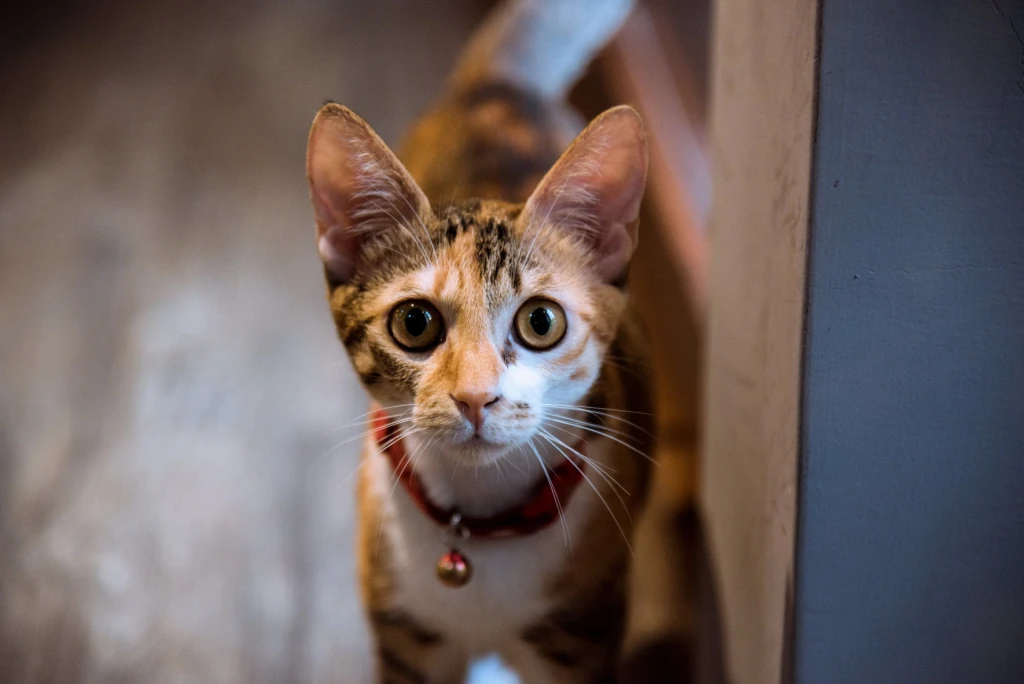Have you ever wondered why cats arch their backs? You've probably seen your furry friend do this pose many times, whether they are stretching after a nap, playing with a toy, or reacting to a stranger. But what does it mean? And how can you tell if your cat is happy, scared, or in pain when they arch their back?
In this blog post, we will explore the reasons behind this common and intriguing cat behavior. We will also share some tips on how to pet your cat the right way and avoid upsetting them or hurting them. By understanding your cat's body language and preferences, you can improve your relationship with them and make them feel more comfortable and loved.
Why Do Cats Arch Their Backs
Cats are fascinating creatures with many unique behaviors and body language cues. One of the most recognizable and intriguing cat poses is the arched back, which can have different meanings depending on the context and the cat's mood. In this section, we will explore some of the possible reasons why cats arch their backs and what they are trying to communicate.
One reason why cats arch their backs is to stretch their muscles and spine after a long nap or a period of inactivity. Cats are very flexible and agile animals that need to keep their bodies in good shape for hunting and playing. Stretching helps them improve their blood circulation, release toxins, and prepare for action. Cats may also arch their backs while yawning or scratching, which are signs of relaxation and comfort.
Another reason why cats arch their backs is to express fear or aggression when they encounter a potential threat or an unwelcome visitor. This is the classic "Halloween cat" pose that makes them look bigger and more intimidating to scare away the enemy. Cats that are afraid or angry will also raise their fur, dilate their pupils, show their teeth, and hiss or growl. This is a clear signal that they are not happy and want to be left alone.
A third reason why cats arch their backs is to show excitement or happiness when they are in a playful mood or when they receive attention from their favorite human. Cats that are feeling playful may arch their backs as a way of inviting another cat, a toy, or a person to join them in a fun chase or pounce. They may also wiggle their tails, crouch low, or jump around. Cats that are feeling happy may also arch their backs when they are being petted or scratched on their favorite spots, such as the base of the tail, the chin, or the ears. They may also purr, rub against you, or head-butt you to show their affection and gratitude.
A fourth reason why cats arch their backs is to display their rear end or their genitals to another cat or a person. This may be a sign of sexual interest if the cat is in heat or looking for a mate. It may also be a sign of trust or friendship if the cat is familiar and comfortable with the other party. Cats have scent glands on their rear end that they use to mark their territory and communicate with other cats. By showing their bum, they are sharing their personal information and inviting you to do the same.
These are some of the common reasons why cats arch their backs, but there may be other factors involved depending on the individual cat and the situation. Cats are complex and expressive animals that use their body language to convey their emotions and intentions. By observing and understanding your cat's behavior, you can learn more about their personality and preferences and build a stronger bond with them.
Types Of Back Arches
Not all back arches are created equal. Depending on the context and the cat's intentions, there are several different types of back arches that you might observe. Here are some of the most common types:
- Defensive arch: When a cat feels threatened or fearful, they may arch their back into a defensive position. This involves raising the hair on their back and tail, flattening their ears, and hissing or growling. This type of arch is designed to make the cat appear larger and more intimidating, and it's usually accompanied by other defensive behaviors.
- Stretching arch: Cats are natural stretchers, and they may arch their back as part of their daily stretching routine. This type of arch is often accompanied by a big yawn and a relaxed expression. Stretching helps to keep cats limber and agile, and it's a great way for them to work out any kinks in their muscles and joints.
- Playful arch: When a cat is feeling playful and happy, they may arch their back as a sign of excitement. This type of arch is usually accompanied by a wagging tail, dilated pupils, and an overall energetic demeanor. Playful arches are a great indicator that your cat is having fun and enjoying themselves.
- Greeting arch: Cats may also arch their back as a way of greeting other cats or humans. This type of arch is usually accompanied by a relaxed tail and a friendly expression. When cats arch their back in greeting, they are essentially saying "hello" and signaling that they are open to interaction.
- Hunting arch: Finally, cats may arch their back as part of their hunting behavior. This type of arch is often seen when a cat is stalking prey, and it's designed to help them maintain balance and stay focused on their target. Hunting arches are usually accompanied by a slow, deliberate approach and a fixed gaze.
Anatomy Of A Cat's Back
To fully understand why cats arch their backs, it's important to take a closer look at the anatomy of their spine. Unlike humans, cats have a highly flexible spine that allows them to contort their bodies into all sorts of positions.
Cats have a total of 53 vertebrae in their spine, compared to the 33 vertebrae that humans have. These vertebrae are separated by discs of cartilage, which act as shock absorbers and help to cushion the spine.
One unique feature of a cat's spine is the presence of a flexible area called the thoracic region. This part of the spine is made up of 12 vertebrae that are attached to the ribs, allowing for greater mobility and flexibility in the upper body. When a cat arches their back, they are using the muscles in their thoracic region to lift their spine and create the distinctive arch shape.
Cats also have powerful muscles in their back and neck that allow them to rotate their spine and contort their bodies in all sorts of ways. This flexibility is not only useful for activities like hunting and play, but it also allows cats to groom themselves effectively and maintain their hygiene.
Understanding the unique structure and capabilities of a cat's spine can help you appreciate just how impressive and adaptable these animals really are. Whether they're arching their back to communicate with other cats or simply stretching out after a nap, cats are truly remarkable creatures.
Cat Reactions to Being Touched
Cats are often misunderstood as aloof or indifferent to human affection, but the truth is that many cats enjoy being petted and held by their owners. However, cats are also very sensitive and selective about how and where they like to be touched, and they may react differently depending on their mood, personality, and level of trust. In this section, we will look at some of the common cat reactions to being touched and what they mean.
How to Tell They Don't Like It
Some cats may not appreciate being touched at all, or only in certain situations or places. They may show their displeasure by:
- Moving away or hiding
- Flattening their ears or flicking their tail
- Growling, hissing, or biting
- Showing signs of stress or anxiety, such as dilated pupils, panting, or trembling
Some possible reasons why cats don't like being touched are:
- They are not used to human contact or socialization
- They have a history of trauma or abuse
- They are in pain or discomfort
- They are overstimulated or overwhelmed
- They have a medical condition that makes them sensitive to touch, such as feline hyperesthesia syndrome
If your cat shows any of these signs, you should respect their boundaries and stop touching them. You should also consult your veterinarian if you suspect any health issues or behavioral problems.
How to Tell If They Do Like It
Some cats love being touched and will seek out your attention and affection. They may show their enjoyment by:
- Purring or kneading
- Rubbing their head or body against you
- Exposing their belly or rear end
- Closing their eyes or blinking slowly
- Relaxing their muscles and posture
Some possible reasons why cats like being touched are:
- They are well-socialized and trust you
- They are in a calm and comfortable mood
- They want to bond with you or mark you as their own
- They want to express their happiness or gratitude
- They want to solicit more petting or attention
If your cat shows any of these signs, you can continue to pet them gently and softly, paying attention to their preferences and signals. You should also reward them with praise, treats, or toys for being friendly and affectionate.
The best places to pet a cat are usually the head, chin, neck, and cheeks, as these are where their scent glands are located. Some cats may also enjoy having their back, sides, or tail stroked, but others may find these areas too sensitive or ticklish. You should avoid touching your cat's belly, paws, ears, whiskers, or mouth unless they invite you to do so.
Petting your cat can be a wonderful way to show your love and care for them, as well as to reduce stress and improve your health. However, you should always respect your cat's individuality and personality, and learn to read their body language and cues. By doing so, you can ensure a positive and rewarding experience for both of you.
Common Misconceptions
Despite their ubiquitous presence in our lives, cats are still often misunderstood creatures. Here are a few common misconceptions about cat back arching that you may have heard:
- Back arching always means aggression: As we discussed earlier, cats may arch their back for a variety of reasons, including stretching, playfulness, and greeting. While back arching can certainly be a sign of aggression or defensiveness in some contexts, it's not always an indicator of negative emotions.
- Only unfriendly cats arch their backs: Some people assume that if a cat arches their back, they must be unfriendly or unapproachable. In reality, many cats will arch their back as a friendly greeting or as part of their daily stretching routine. Just like humans, cats have unique personalities and preferences, and some may be more outgoing or affectionate than others.
- Back arching is always a deliberate communication: While cats are certainly capable of using body language to communicate with humans and other cats, not every back arch is a conscious signal. Sometimes cats will arch their back simply because it feels good or because they're adjusting their posture.
- Back arching is always a sign of a happy cat: While cats may arch their back as part of their playful or content behavior, this is not always the case. As we discussed earlier, cats may also arch their back as a sign of fear, aggression, or discomfort. It's important to pay attention to other cues, such as the cat's facial expression and body posture, to interpret their overall emotional state.
Other Body Language Cues To Look For
While back arching can be a helpful indicator of a cat's emotional state, it's important to pay attention to other body language cues as well. Here are a few other things to look for when trying to interpret your cat's behavior:
- Tail position: The position of a cat's tail can reveal a lot about their emotional state. A high, upright tail usually indicates a confident, content cat, while a low or tucked tail may signal fear or discomfort.
- Ear position: A cat's ears can also be a helpful clue to their emotional state. When a cat's ears are forward, they may be alert or curious, while flattened ears may indicate fear or aggression.
- Purring: While purring is often associated with contentment, cats may also purr when they are in pain or distress. Pay attention to other body language cues to determine whether your cat's purring is a sign of happiness or something else.
- Eye contact: Direct eye contact can be a sign of trust and affection in cats, but it can also be intimidating or threatening. Look for other signs of comfort or discomfort, such as slow blinking or dilated pupils, to determine whether your cat is feeling relaxed or anxious.
- Vocalizations: Cats may meow, yowl, hiss, or growl to communicate their emotions. Pay attention to the tone and volume of these sounds to get a sense of your cat's overall mood.
FAQ
Q: What does it mean when a cat arches its back and hisses?
A: This means that the cat is scared and trying to defend itself from a perceived threat. The cat is making itself look bigger and more intimidating by raising its fur and showing its teeth. The hissing is a warning sound to tell the intruder to back off.
Q: What does it mean when a cat arches its back and purrs?
A: This means that the cat is happy and enjoying your attention. The cat is arching its back to expose its favorite spots for petting, such as the base of the tail, the chin, or the ears. The purring is a sign of contentment and gratitude.
Q: What does it mean when a cat arches its back and wiggles its tail?
A: This means that the cat is playful and ready to pounce. The cat is arching its back to prepare for a jump or a chase. The wiggling tail is a sign of excitement and anticipation.
Q: What does it mean when a cat arches its back and exposes its belly?
A: This means that the cat trusts you and wants to show you its vulnerable side. The cat is arching its back to invite you to rub its belly or play with it. However, not all cats like belly rubs, so be careful not to touch it if the cat shows signs of discomfort or aggression.
Q: What does it mean when a cat arches its back and shows its rear end?
A: This means that the cat is either in heat or trying to bond with you. The cat is arching its back to display its genitals or scent glands to another cat or a person. This can be a sign of sexual interest or trust, depending on the context.
Q: What does it mean when a cat arches its back and stretches?
A: This means that the cat is relaxed and comfortable. The cat is arching its back to stretch its muscles and spine after a nap or a period of inactivity. Stretching helps the cat improve its blood circulation, release toxins, and prepare for action.
Q: What does it mean when a cat arches its back and scratches?
A: This means that the cat is grooming itself or marking its territory. The cat is arching its back to reach hard-to-clean areas or to leave its scent on an object. Scratching also helps the cat sharpen its claws and remove dead skin cells.
Q: What does it mean when a cat arches its back and bites?
A: This means that the cat is either annoyed or overstimulated by your touch. The cat is arching its back to signal that it has had enough petting or playing and wants you to stop. Biting can also be a sign of affection or playfulness, but it should be gentle and not cause pain.
Q: What does it mean when a cat arches its back and rolls over?
A: This means that the cat is either happy or submissive. The cat is arching its back to show you its belly or to roll on the floor. Rolling over can be a sign of joy or surrender, depending on the situation.
Q: What does it mean when a cat arches its back and rubs against you?
A: This means that the cat loves you and wants to mark you as its own. The cat is arching its back to rub its head or body against you, transferring its scent and oils onto you. Rubbing can also be a way of asking for attention or food.
Conclusion
Cats are amazing animals with a lot of personality and expression. They use their body language to communicate their emotions and intentions to us and to other cats. One of the most recognizable and fascinating cat poses is the arched back, which can have different meanings depending on the context and the cat's mood.
We hope this blog post has helped you learn more about why cats arch their backs and how to pet them properly. By paying attention to your cat's signals and respecting their boundaries, you can make them feel more secure and happy. And who doesn't want a happy cat?
